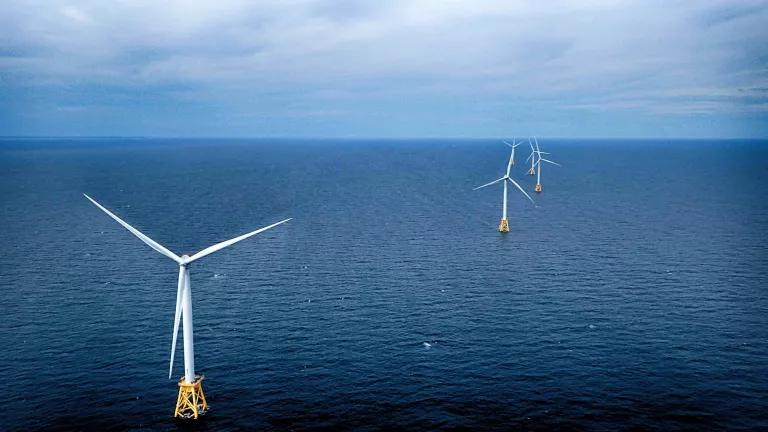Building Smart Offshore Wind Power

Today NRDC releases a new resource—Harnessing the Wind: How to Advance Wind Power Offshore—which outlines how we can tap into the enormous wind power potential off the U.S. coastline in a smart way, protective of ocean life. Developed in consultation with other environmental organizations, the guide identifies key challenges and proposes actions to avoid, minimize, and mitigate wildlife impacts. The recommendations build on recently announced best management practices for North Atlantic right whales during offshore wind construction and operations and are applicable to a range of offshore wind technologies.
Offshore wind is taking off along America’s coastlines, promising healthier air free of mercury and other pollutants as well as thousands of well-paying clean energy jobs. Along the Atlantic Coast alone, projects capable of producing more than 25,000 megawatts of power could be operational within the next 15 years, ensuring enough renewable electricity to power at least 12.5 million homes. We are standing at the dawn of a new fossil-free era of offshore energy production.
Offshore wind power is coming not a moment too soon. Recent analysis shows the U.S. must rapidly scale up energy efficiency and all forms of clean energy—including offshore wind—to reduce dangerous greenhouse gas emissions enough for us to prevent the worst impacts of climate change. Already, we are seeing increased droughts, more severe storms and heat waves, and greater flooding—even on sunny days. In our oceans, climate change is bleaching coral, displacing species worldwide, and acidifying the water, making it harder for shell-building organisms like oysters to grow shells and survive. We must kick our fossil fuel addiction.
Yet even with its immense long-term benefits, offshore wind power, like all types of energy development, poses risks to its immediate environment and must be developed responsibly. Wind farm construction and operation can disrupt and displace vulnerable ocean wildlife from prime feeding and breeding areas. Many species, already under stress from decades of overfishing, pollution, and habitat destruction, and facing new pressures from climate change, may struggle to acclimate, resulting in further population declines.
We can harness the clean energy we need while protecting our valuable marine wildlife heritage. By placing projects outside of important and sensitive habitats and taking steps to avoid, minimize, and mitigate underwater noise, ship strikes, and turbine collisions during wind farm construction and operations, we can ensure that wind proceeds responsibly. Developers must also commit to scientific research and long-term monitoring. A better understanding of our ocean life and potential wind industry impacts—both at the project level and the combined impact of multiple projects—alongside sensible protections can ensure the offshore wind future we need advances in harmony with our most vulnerable wildlife.

© Florida Fish and Wildlife Conservation Commission, NOAA Research Permit # 594-1759.
